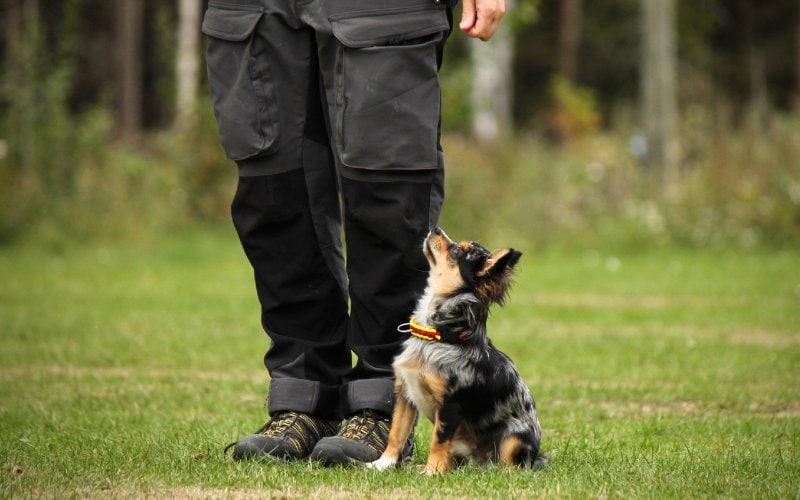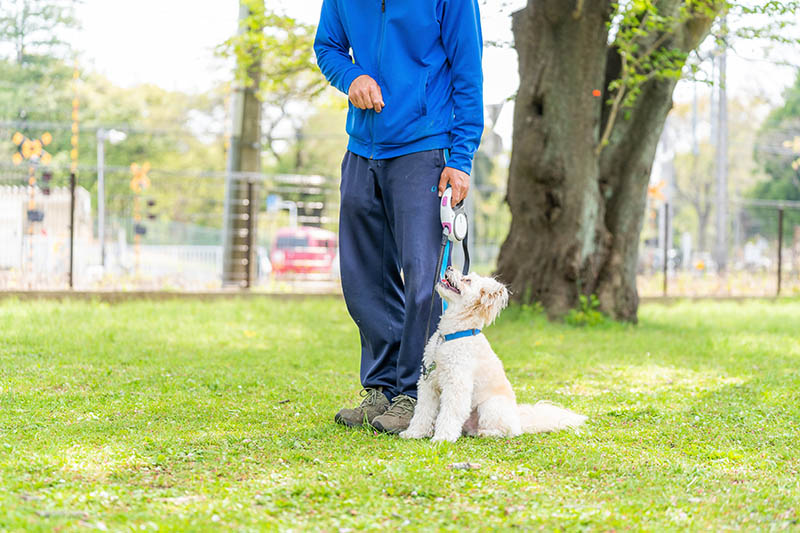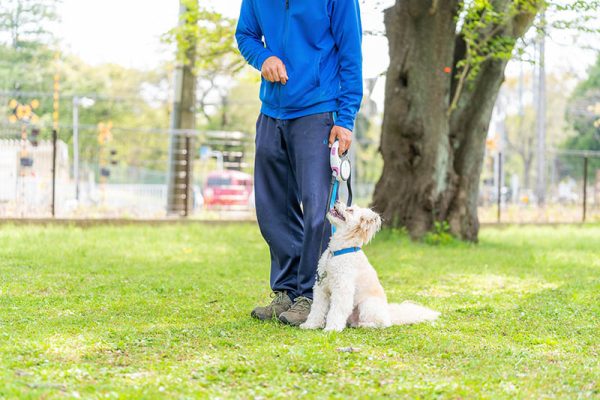Pet ownership has risen dramatically in the past few years, as people turned to cats and dogs as a means of combating the loneliness and anxiety caused by Covid. And, even during times of recession, pet owners are willing to fork out for their favorite animals.
As well as buying food and other equipment, this means there are individuals and families across the world willing to pay for other pet services, including training. A dog training business does pose certain challenges, but it can also be very rewarding, both financially and professionally. And, depending on how you structure the business, it can be quite easy to establish.
Below, we look at some of the basic steps you will need to take to start your own dog-training business.
Pros & Cons of a Dog Training Business
Before you embark on getting certified or building up a client base, you need to ensure that a dog training business is really the right thing for you. There are several benefits, but there are also some drawbacks.
- Flexibility: To some extent, setting up your own dog training business offers flexibility. You can decide when to offer classes and where to provide your services.
- Rewarding: Whether you train service dogs or help new owners integrate their puppies into the family, it can be very rewarding to see your four-legged clients develop and blossom.
- Growth: There is room for growth in the dog training market. You could eventually hold multiple classes over various locations, and potentially even take on other trainers to further expand your offerings.
- Inexpensive: You may already have most of the equipment you need to start dog training. And, if you need to pay for premises, you can use the money you make from the classes, which means minimal upfront costs. If you train at your own home, or your client’s homes, the costs could be even lower.
- Clients: You might get into dog training because of your love for dogs, but you will have to deal with people just as often as their four-legged companions, in most cases.
- Aggressive Dogs: Depending on the type of training you offer, it is likely that you will come up against aggressive dogs at least from time to time. These are the ones that tend to need training the most, and you need to be prepared to deal with them.
The 8 Steps for Starting a Dog Training Business
1. Decide on Your Expertise
If you have decided that a dog training business is right for you, the next step is to determine the kind of training you will offer.
- Group Training: Group training classes, which are sometimes also known as puppy classes, invite multiple owners and their dogs to partake in classes at the same time. You could have just a couple of participants or as many as a dozen or more. As well as teaching some basic commands, these types of classes are great for socializing dogs and they help teach owners how to train their dogs at home.
- Private Training: Private training means visiting clients in their own homes, or having clients come to you. This type of service is often used for reactive or aggressive dogs, but can also be useful for anxious dogs that wouldn’t be able to concentrate in a group training environment. Rates are higher for private training, per dog, but you can only see one client at a time.
- Service Dog Training: Service dogs range from guide dogs and hearing dogs to therapy and emotional support dogs, and they need extensive training before they can be placed with their long-term handlers. It can take a long time and a lot of experience to become a recognized service dog trainer.
- Canine Sports: Agility is perhaps the best known of the canine sports, but other sports like flyball and herding or nose work classes also exist. Although these are sports classes for dogs and owners to get involved in, the dogs, and their owners, do require some training.
- Behavioral Training: Behavioral training is similar to private or group training, but it concentrates on specific issues or types of dogs. For example, you can offer training to reactive dogs that are aggressive while on their leash, or dogs with specific phobias. With the number of new dog owners that are returning to the office, there is a call for behavioral training for dogs with separation anxiety, too.
2. Find the Finance
No matter what type of training service you offer, you are going to need some level of financing. Even if you visit your clients’ homes and use their equipment, you will need money to pay for insurance and marketing, networking, and your website. Total costs can vary from $1,000 or so, for a very basic setup, to $20,000 or more for more complex businesses. If you have savings you can use, this may be an option. Alternatively, put a business plan together and speak to banks and other financers to help arrange the money you need.

3. Get Qualified and Certified
You don’t need formal qualifications or certifications to become a dog trainer, but they will benefit you. Formal training will help ensure that you have the skills and knowledge to do the job, and some clients may only be willing to work with a qualified instructor. The Certification Council for Professional Dog Trainers offers courses that require you to gain experience as well as pass a multiple-choice exam.
4. Get Experience
Having some experience is a good idea. Again, it is something that you can show to potential clients when trying to persuade them you know what you are doing, and if you want to become a service dog trainer, you are unlikely to get very far without this experience. Volunteer at shelters or relevant businesses to help get the experience.

5. Get Insured
You will need insurance to be a dog trainer. At the very least, you need liability insurance. You will likely also need business insurance, bailee coverage for any injury or illness caused to dogs under your care, workers’ compensation insurance if you have other people working for you, and auto coverage to protect the van or other vehicle that you drive.
6. Decide On Premises
Depending on the type of training you will offer, there are various options when it comes to the premises you will use. If you are training service dogs, you will likely do this from your own home. Puppy classes can use a local community center or hall, which you should be able to rent out for an hour or two, while private training can be offered in your client’s homes.

7. Buy Your Equipment
You likely won’t need much equipment for training. You may need leashes and harnesses for certain cases, and if you are setting up canine sports classes, or will introduce these as elements to your training group classes, you will need the appropriate equipment. You may also want to invest in a vehicle and it is always best to make sure you have everything you need before you start your business, rather than buying the equipment as you discover you need it.
8. Market your Business
Set up a website, print flyers and business cards, and network with local veterinarians and pet supply businesses. Talk to groomers and other pet professionals, too. The more relationships you can establish with related businesses, the more you can benefit one another. You can recommend a good groomer to owners that need one, and a friendly groomer can recommend your training services if they meet a dog that perhaps isn’t as well-behaved as it can be.
Once you have a website, post on social media with photos of your four-legged clients (get permission first) and use local groups to help spread the word.
Conclusion
Dog training is a potentially rewarding career path, but there aren’t that many job opportunities even for a qualified trainer. Setting up your own dog training business may be the most fruitful path, although there are challenges to establishing and running any type of business. Determine the type of training you will offer, get insured, and make sure you have all the equipment you will need, before you start.
Always be professional and helpful with your two-legged clients, too, because this will help with word of mouth, and look for ways to use social media to help spread the word even further.
Featured Image Credit: Tadogami, Shutterstock












